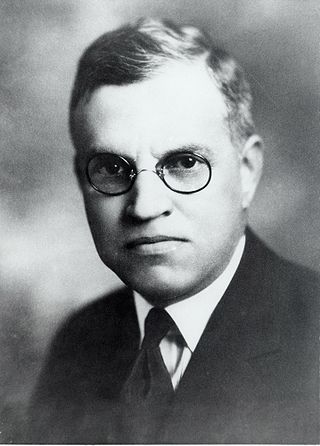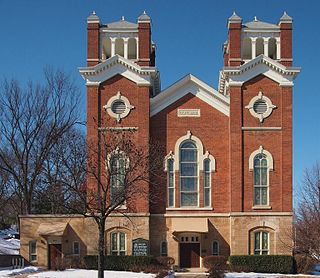Harold C. Whitehouse | |
|---|---|
 | |
| Born | January 31, 1884 |
| Died | September 25, 1974 (aged 90) |
| Occupation | Architect |
| Spouse | Catherine Cox Weston (m. 1909; died 1964) |

Harold Clarence Whitehouse (January 31, 1884 [1] - September 25, 1974 [2] ) was an American architect based in Spokane, Washington. [3] [4]
A native of Massachusetts, Whitehouse moved to Spokane in 1906. He worked for a time in the office of John K. Dow and then formed a partnership with George Keith. He then left Spokane to study architecture at Cornell University. He graduated from Cornell in 1913. [2] With fellow Cornell architecture graduate Ernest V. Price, he formed a partnership, the firm Whitehouse & Price, in 1913. [3] He was elected to the American Institute of Architects College of Fellows in 1959 and won the Allied Art Award in 1961. [2]
Whitehouse was married to Catherine Cox Weston from 1909 to her death in 1964, and later to Ruth W. Thompson until his death. [2]
Works of Whitehouse or the firm (with attribution) include:
- Benewah Milk Bottle, S. 321 Cedar Spokane, WA (Whitehouse & Price), NRHP-listed [5]
- Bradsmore Building, Priest River, Idaho (Whitehouse & Price), Part of NRHP-listed historic district. [5] [6]
- Cathedral of St. John the Evangelist, Spokane, Washington [7]
- Chamber of Commerce Building, 9 S. Washington St., Spokane, WA. [8]
- Christ Episcopal Church, 210 Fifth St. SW. Puyallup, WA (Whitehouse, Harold C.), NRHP-listed [5]
- Cordova Theater, 135 N. Grand Ave. Pullman, WA (Whitehouse & Price), NRHP-listed [5]
- Culmstock Arms Apartments. [2]
- Dover Church, Washington between Third and Fourth Dover, ID (Whitehouse & Price), NRHP-listed [5]
- Eastern State Hospital. [2]
- Farragut Naval Training Station (650 buildings), Lake Pend Oreille, Bayview, Idaho. [8]
- John A. Finch Memorial Nurses Home, N. 852 Summit Blvd. Spokane, WA (Whitehouse & Price), NRHP-listed [5]
- Hutton Settlement (a complex of neo-Tudor cottages), 9907 Wellesley Spokane, WA (Whitehouse, Harold C.), NRHP-listed [5] [9]
- Lincoln Building, corner of Lincoln and Riverside, Spokane, WA. [8]
- Masonic Temple, Deer Lodge, Montana (Whitehouse & Price), part of NRHP-listed historic district. [10] [5]
- One or more works in Millwood Historic District, roughly bounded by Argonne and Sargent Rds., and by Euclid and Liberty Aves. Millwood, WA (Whitehouse, Harold), NRHP-listed [5]

- Mineral County Courthouse, Superior, Montana (Whitehouse & Price) [11]
- Rosebush House, 3318 N. Marguerite Rd. Millwood, WA (Whitehouse, Harold), NRHP-listed [5] [12]
- Sandpoint High School, 102 S. Euclid Ave. Sandpoint, ID (Whitehouse & Price), NRHP-listed [5]
- St. Peter's Cathedral, Helena, Montana. [2]
- St. Thomas Church, Medina, Washington
- University of Washington Music Building. [2]
- Washington State University Chemistry Building. [2]
- West Valley High School, N. 2805 Argonne Rd. Millwood, WA (Whitehouse & Price), NRHP-listed [5] [2]
On September 25, 1974, Whitehouse died at age 90 in a Spokane convalescent center. [2] Whitehouse's papers, including original drawings, are housed at the Eastern Washington State Historical Society and the University of Oregon Libraries Special Collections and University Archives. [8] [13]


















